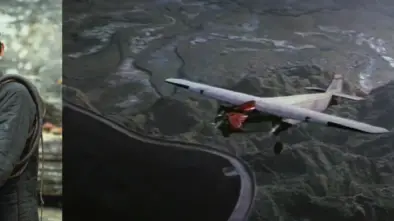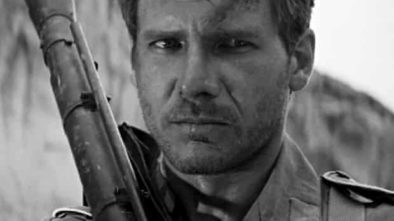Learn Staging From Steven Soderbergh’s Re-Edit of ‘Raiders of the Lost Ark’
With its 1930s matinee film origins, Raiders of the Lost Ark is perfect as a black and white film. But when Steven Soderbergh drained the film of all its color for his 2014 re-edit, he had something else in mind. On his website, he said the experiment was “for education purposes only”, emphasizing the purpose is to teach you about staging.
Before we continue, let’s back up a bit.
What is staging?
Those with a theater background will be familiar with blocking. Performance blocking, or stage blocking, or actor blocking perform the same function: how to place one or more actors around a space during a production. Blocking or staging not only refers to how actors move through a scene, but how they interact with their environment, and even their body language.
More specifically, staging a scene refers to the placement and movement of objects in the frame, as well as the camera (s) in relation to the performance blocking. In other words staging a scene has everything to do with composition of a frame, and getting the best performance from an actor. Apart from lighting a scene, a cinematographer will discuss the placement of the camera, movement, and focus area with the director.
Therefore, blocking should effectively communicate what is happening through action. Blocking is part of the vocabulary of film, and emphasizes the edict that nothing that doesn’t serve the story should appear in the film.
Back to Soderbergh
This is why Soderbergh states: “I operate under the theory a movie should work with the sound off, and under that theory, staging becomes paramount.”
By muting the dialogue and replacing the familiar John Williams score with a soft, pulsating electronic soundtrack, Soderbergh makes you focus on the movement of the camera and the staging of each scene.
Why Soderbergh replaced the score with a mix of music from Trent Reznor and Atticus Ross’s compositions from The Social Network, instead of just making the whole film silent, is had to know. Some viewers found the music distracting and just hit the mute button.
Soderbergh backs up his re-edit of Raiders with high praise for director Steven Spielberg:
“He forget more about staging by the time he made his first feature than I know to this day (for example, no matter how fast the cuts come, you always know exactly where you are—that’s high level visual math shit).”
He also praises Douglas Slocombe’s cinematography:
“At some point you will say to yourself or someone THIS LOOKS AMAZING IN BLACK AND WHITE and it’s because Douglas Slocombe shot THE LAVENDER HILL MOB and the THE SERVANT and his stark, high-contrast lighting style was eye-popping regardless of medium.”
Soderbergh gives some pointed guidelines for watching his re-edit and understanding the staging in Raiders.
“So I want you to watch this movie and think only about staging, how the shots are built and laid out, what the rules of movement are, what the cutting patterns are. See if you can reproduce the thought process that resulted in these choices by asking yourself: why was each shot—whether short or long—held for that exact length of time and placed in that order?”
You can watch the whole film here.




